
Human + Machine: Reimagining Work in the Age of AI
by
Paul R. Daugherty
and
H. James Wilson
Published 15 Jan 2018
As you shall see in this book, the third wave has created a huge, dynamic, and diverse space in which humans and machines collaborate to attain orders-of-magnitude increases in business performance. We call this the “missing middle”—“missing” because almost no one talks about it, and only a small fraction of companies are working to fill this crucial gap (see figure I-1). FIGURE I-1 The missing middle In the missing middle, humans work with smart machines to exploit what each party does best. Humans, for example, are needed to develop, train, and manage various AI applications. In doing so, they are enabling those systems to function as true collaborative partners. For their part, machines in the missing middle are helping people to punch above their weight, providing them with superhuman capabilities, such as the ability to process and analyze copious amounts of data from myriad sources in real time.
…
You aren’t just a rotor expert; with the help of the digital twin, you’ve become an expert of a much more complex system; your knowledge of “how things work” has become ever more important. We describe each of the eight fusion skills to guide managers and workers in designing and developing a workforce capable of thriving in the missing middle (see figure 8-1). Three of these skills allow people to help machines (the left side of the missing middle); another three enable people to be augmented by machines (the right side of the missing middle); and the last two help people skillfully work across both sides of the missing middle. While these skills are about profound new forms of human-machine interaction, they don’t require expertise in machine learning or programming or other technical areas.
…
For their part, machines in the missing middle are helping people to punch above their weight, providing them with superhuman capabilities, such as the ability to process and analyze copious amounts of data from myriad sources in real time. Machines are augmenting human capabilities. In the missing middle, humans and machines aren’t adversaries, fighting for each other’s jobs. Instead, they are symbiotic partners, each pushing the other to higher levels of performance. Moreover, in the missing middle, companies can reimagine their business processes to take advantage of collaborative teams of humans working alongside machines. It’s not just digital companies that are exploiting the missing middle. Rio Tinto, the global mining conglomerate, is a case in point. The company is using AI to manage its vast fleet of machinery—autonomous drills, excavators, earth movers, and so on—from a central control facility.
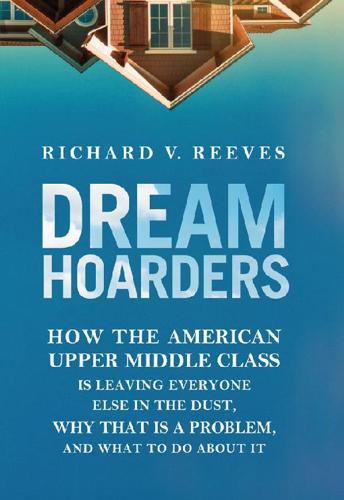
Dream Hoarders: How the American Upper Middle Class Is Leaving Everyone Else in the Dust, Why That Is a Problem, and What to Do About It
by
Richard V. Reeves
Published 22 May 2017
The short-lived proposal was not to allow high-density, high-rise developments but what the architect Daniel Parolek has labeled the “missing middle” in American cities: townhouses, duplexes, triplexes, two- and three-flats, and bungalow courts. The detached single-family home has now become the dominant form, housing almost two-thirds of American families. In the last three decades, the share of new family homes that are attached to another has halved to 10 percent. Parolek believes that missing-middle properties should generally be no more than two and a half stories high, so as to blend in with detached houses; they would also provide homes for middle-income families in high-cost cities.
…
Parolek believes that missing-middle properties should generally be no more than two and a half stories high, so as to blend in with detached houses; they would also provide homes for middle-income families in high-cost cities. Upper middle-class neighborhoods won’t be asked to accept high-rise apartment buildings, which would dramatically change their architectural feel. But they should be expected to adopt more inclusive rules that allow for the kind of “missing middle” housing for which Parolek and others advocate. This would reduce the segregation of affluent families into economically monotonous neighborhoods, mix up school zones some, and increase the housing supply in some of America’s cities. Braver legislators are needed; but elected officials can’t be expected to get too far ahead of their voters on this issue, even when they want to.
…
.… But norms require widespread acceptance in order to take hold, and it is unclear who could be expected to take the leadership role in establishing and entrenching these norms among the well-off.48 There are plenty of sensible ideas around to reduce segregation. Some, such as the promotion of “missing middle” homes, could, with careful political management, be acceptable to upper middle-class voters. But there will need to be some movement in terms of attitudes, too. Leaders from within the upper middle class will be needed. And that, in turn, will require a more honest appreciation of our relative privilege. 6.
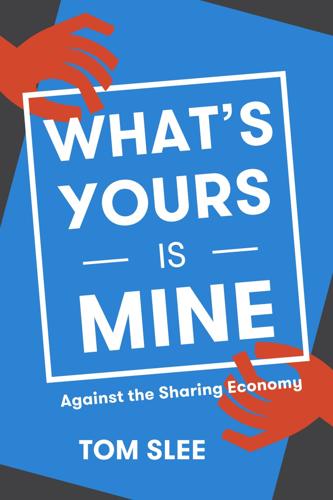
What's Yours Is Mine: Against the Sharing Economy
by
Tom Slee
Published 18 Nov 2015
But Google is changing its revenue model for YouTube, and told Keating that if she wanted to continue using Content ID she would have to sign a new services agreement, committing her not to release music elsewhere before she releases it on YouTube, to running ads on all her videos, and to numerous other rules.33 The content may be open, but the platform itself is not. The rise of the amateur, of openness, and of free culture has not been at the expense of the blockbuster, but instead has led to a “missing middle.” Those who look to make a living in a modest way from their art (or from their role in the creative process as booksellers, editors, and so on) have found themselves on the outside of all these changes. As Andrew Franklin of independent publisher Profile said in 2014: The large bestselling authors are taking a bigger and bigger share of the market.
…
Hindman’s data on patterns of concentration in [American] online and traditional news media lead him to conclude that online media is even more concentrated (a few outlets get a larger share of the traffic) than many offline industries, particularly radio. The biggest story is, as in cultural production, “the missing middle,” a phrase Hindman coined. He writes: From the beginning, the Internet has been portrayed as a media Robin Hood—robbing audience from the big print and broadcast outlets and giving it to the little guys. But the data . . . suggest that audiences are moving in both directions. On the one hand, the news market in cyberspace seems even more concentrated on the top ten or twenty outlets than print media is.
…
Neighboring Karnataka’s Bhoomi (or “land”) e-governance program has had similar effects: Raman and her colleagues concluded that “the digitization of land records led to increased corruption, much more bribes and substantially increased time taken for land transactions. At another level, it facilitated very large players in the land markets to capture vast quantities of land at a time when Bangalore experiences a boom in the land market.” 43 The story is another case of the “missing middle,” where small businesses with local expertise are displaced, thanks to digital technologies, by fewer and bigger companies with the resources and expertise to make the most of formalized data sets. When commerce is mentioned by open data proponents, they tend to use the language of entrepreneurship and innovation, contrast the new firms with the aging business models they seek to replace, and they often present commercial use as a complement to civic use.
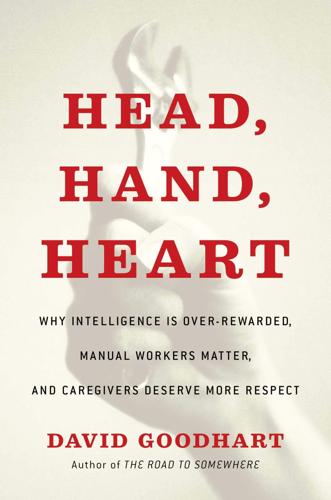
Head, Hand, Heart: Why Intelligence Is Over-Rewarded, Manual Workers Matter, and Caregivers Deserve More Respect
by
David Goodhart
Published 7 Sep 2020
They often add more educational value than the elite Russell Group universities with a high proportion of students from selective or private schools. The people who run these new universities bridle at the suggestion that they should abandon their university status and form a more distinctive technical or applied subset of higher education, yet they choose to play in a league where they are bound to be the losers. The Missing Middle The relevant question in most rich countries is this: Is a classical university—with its bias toward the academic, and lecturers who are often researchers first and teachers second—the best place to deliver the kind of higher vocational skills that many individuals want to acquire and that the economy, especially in the United Kingdom and United States, so badly needs?
…
Roger is just one case, but says he knows of many others who in retrospect realize they were pressured into going to university by their schools and parents and the wider culture when it was not the right choice. A 2017 YouGov poll in the United Kingdom found that 35 percent of recent graduates disagreed that the cost of university had been worth it in terms of career prospects.21 The result is not just many frustrated individuals but that glaring “missing middle” in the economy’s skill base and the neglect of Hand that has left severe skill shortages in STEM-related areas, the skilled trades, and technician-level jobs, especially in construction, health, and information technology, from coders to web designers. UK employers in 2017 complained that they had trouble filling more than 40 percent of skilled-trade vacancies.22 (Many Commonwealth countries, especially in Africa, that followed the United Kingdom down the path of university expansion are also now worrying about the weakness of their vocational skill base.)
…
The job was due to be reclassified as a graduate position. A graduate would be bored and offended by the routine, errors would increase, turnover in the position would increase, a decent human being is discarded and degraded—for what? Satisfying a misguided theory about social mobility?” This echoes the “missing middle” problem of the unsuitability of graduates for many middling jobs, described by Paul Lewis in the last chapter, as does a 2016 report for the UK think tank the Resolution Foundation on “the ‘forgotten 40 per cent’ of the workforce—mid-skilled workers… without a university degree.”44 The foundation organized focus groups for members of that forgotten group who reported that the influx of graduates into their occupations had reduced their progression prospects.
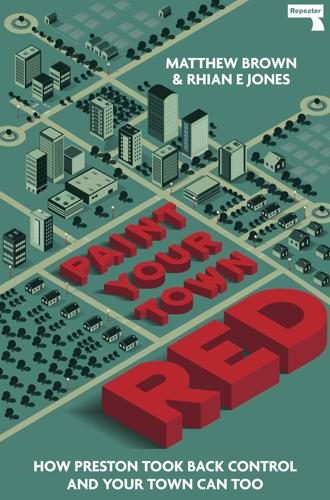
Paint Your Town Red
by
Matthew Brown
Published 14 Jun 2021
The Welsh government is a complex organisation with varying agendas, and its take-up of the “foundational economy” has not fully extracted its potential as a transformative strategy for holistic change. Nonetheless, its approach to supporting and developing local and community-led initiatives can be instructive. It focuses on three key areas: the Foundational Economy Challenge Fund, efforts to grow the “missing middle”, and spreading and scaling-up best practice. The Foundational Economy Challenge Fund is a £4.5 million resource that can be used to invest in experimental projects across Wales that look to bolster the foundational economy, as a kind of angel investor fund for social entrepreneurship. This was intended to allow community groups and organisations to experiment with developing economic and social alternatives with less fear of failure, and its application process was deliberately made as accessible and un-bureaucratic as possible.
…
Although the progress of many resultant projects has been halted or disrupted by the impact of Covid-19, the bids submitted to the Challenge Fund covered a variety of initiatives from town-centre regeneration to social care, and constitute a series of micro-experiments in local-led initiatives. The “missing middle” approach is oriented around building up local supply chains, increasing the range and depth of SMEs in the country and helping to keep value circulating within local economies. These are “grounded firms” plugged into local networks and can be micro firms, SMEs and co-ops or community interest companies.
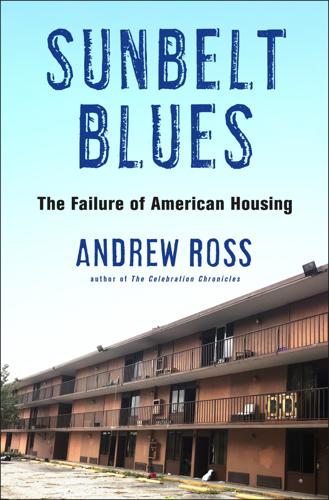
Sunbelt Blues: The Failure of American Housing
by
Andrew Ross
Published 25 Oct 2021
When Central Florida’s single-family home market was still recovering from the financial crash, major home construction companies like Lennar and PulteGroup were all too happy to churn out upscale homes for the VHR market. With ample profits flowing from these contracts, there was little reason to build anything in the “missing middle”—the multiunit housing types such as duplexes, fourplexes, and bungalow courts that traditionally provide more affordable housing. Concessions extracted from the county by these builders are often offset by burdens placed on other kinds of housing. At the same time that Osceola County commissioners waived impact fees for developers of “vacation villas,” they increased them by 87 percent on builders of multifamily apartments.
…
Ryan Cooper and Peter Gowan, “How to Solve the Housing Problem,” Jacobin, Spring 2019, https://jacobinmag.com/2019/06/how-to-solve-the-housing-problem/. 16. See Vicki Been, Ingrid Gould Ellen, and Katherine O’Regan, “Supply Skepticism: Housing Supply and Affordability” (NYU Furman Center, August 2018), https://furmancenter.org/research/publication/supply-skepticismnbsp-housing-supply-and-affordability. 17. Dan Parolek and Arthur C. Nelson, Missing Middle Housing: Thinking Big and Building Small to Respond to Today’s Housing Crisis (Washington, DC: Island Press, 2020). 18. Emily Badger and Quoctrung Bui, “Cities Start to Question an American Ideal: A House with a Yard on Every Lot,” New York Times, June 18, 2019, https://www.nytimes.com/interactive/2019/06/18/upshot/cities-across-america-question-single-family-zoning.html. 19.
…
See affordable housing crash crisis for essential workers as healthcare justice market supply Housing Act of 1949 Housing Bill of Rights Housing First Housing Justice National Platform Housing Question, The (Engels) Houston, Texas humanitarian crisis Hunter’s Creek Hurricane Dorian Hurricane Maria Icon Park Iger, Bob Illinois incarceration Indiana inflation institutional investors International Drive Invitation Homes Irlo Bronson Memorial Highway Ithaca, New York Jackson, Andrew Jacksonville, Florida Japan Jeeves Florida Rentals Jensen, Mary Johnson, Philip Jones, Jeff Jungleland Zoo Kapoor, Vimal Kelly, Cookie Key West Kissimmee, Florida Route 192 shelter for victims of domestic abuse Kissimmee River Kmart Knights Inn Kothari, Miloon labor market Lake Cecile Inn Lake County, Illinois Lake Hart Lake Nona Lake Tohopekaliga Lake Wales Ridge land inflation landlords Hope on 192 moteliers right to evict Las Vegas Latin Kings Latter-day Saints (LDS) League of Women Voters of Orange County Lee, Charles Legoland Lennar Levittown, New York Lewis, Tom Lexin Capital limited liability corporation (LLC) ownership Lincoln Highway Lisbon, Portugal “literally homeless” Los Angeles, California Long Island Long Island City, New York City Los Mosquitos Loughlin, Gary and Maria Louisiana low-income home buyers households housing neighborhoods Lyttle, Melissa Mackie, Brenda and Mike Madison, Wisconsin Magic Castle Magic Kingdom Magic Place Magic Village Maine Malson, Hilary Manatee County, Florida Manhattan, New York City “market failure” market rents Marriott Maryland Massachusetts mass evictions McBain, Jackson McDonald’s McDonald, Debie and Don McGill University McKinney-Vento Homeless Assistance Act McKinsey Medicaid Medicare Medieval Times Melchiorri, Anthony Memphis, Tennessee mental health/illness chronic depression prevalence Mexico Miami, Florida Miami-Dade County, Florida Miccosukee Microsoft middle class Middle East military veterans Milwaukee, Wisconsin minimum wages Minneapolis, Minnesota minorities displacement of households renters “missing middle” Mississippi Missouri mixed-occupancy Mohammadi, Sabina mom-and-pop owners money laundering Monsters, Inc. Laugh Floor Montana Moore, Charles Moore-Willson, Minnie moratorium Morgan Stanley Mormon Church mortgage moteliers motel landlord “motel-Patel” motels as affordable housing option association criminal activity in designated as extended stay designed to meet customer needs evictions families living together in as low-income housing projects motorists in occupancy rates public health self-perception among motel dwellers as warehousing for working poor Mulligan’s Murrin, Greg and Linda Nana, KJ Nashville, Tennessee National Association of Real Estate Brokers National Association of Realtors National Homes Guarantee National Low Income Housing Coalition National Old Trails Road National Press Photographers Association Negrin, Metin NeoCity Ñeta Association Netflix Netherlands Nevada New 21st Century Public Housing Vision New England “new homeless” See also homeless New Jersey New Mexico New Urbanism New York New York City New Yorker Ninth Circuit Ninth Congressional District “nontransient occupancy” nonurban housing crisis See also housing North Carolina Northeast District Northeast Oregon Northern Virginia North Florida North Ranch Ocasio-Cortez, Alexandria Occidental College Oconee Creek offenders Ohio Oklahoma Old Town One Stop Housing Opalka, Jesse opioid crisis Orange Blossom Family Health Orange County, Florida Orange County Housing Trust, California Oregon Organize Florida Orlando, Florida Orlando-Kissimmee tourism corridor Orlando Sentinel Osceola County, Florida commercial to industrial land use Comprehensive Plan evictions fair market rent higher-wage employment household incomes housing problems jobless rate low-income housing projects motel owners owners’ right to evict Parkway planners tax collector tourist attractions urban grown boundary (UGB) vacation homes Osceola County Ninth Circuit Court owners business condo corporate mom-and-pop motel multiunit second-home stores and restaurants ownership shift Oxy Express Oyo Hotels and Homes Palm Beach County, Florida Palm Motel pandemic.

The Coming of Neo-Feudalism: A Warning to the Global Middle Class
by
Joel Kotkin
Published 11 May 2020
Posey, “A Comparison of Rural and Urban America: Household Income and Poverty,” U.S. Census Bureau, December 8, 2016, https://www.census.gov/newsroom/blogs/random-samplings/2016/12/a_comparison_of_rura.html; Goodman, Class in Contemporary China, 140; Nan Chen, “China’s Missing Middle Class,” Foreign Policy in Focus, May 24, 2012, https://fpif.org/chinas_missing_middle_class/. 5 “Shanghai to cap population at 25 million to battle ‘big city disease,’” NBC News, December 26, 2017, https://www.nbcnews.com/news/world/shanghai-cap-population-25-million-battle-big-city-disease-n832591; Eva Dou and Dominique Fong, “Homeward Bound: Beijing Boots Migrant Workers to Trim Its Population,” Wall Street Journal, November 29, 2017, https://www.wsj.com/articles/beijing-evictions-of-migrant-workers-sparks-outrage-1511962464; Salvatore Babones, “China’s Middle Class Is Pulling Up the Ladder Behind Itself,” Foreign Policy, February 1, 2018, https://foreignpolicy.com/2018/02/01/chinas-middle-class-is-pulling-up-the-ladder-behind-itself/; Eva Dou, “Rare Protests in Beijing Condemn Forced Evictions,” Wall Street Journal, December 10, 2017, https://www.wsj.com/articles/rare-protests-in-beijing-condemn-forced-evictions-1512915082; Viola Zhou and Zhuang Pinghui, “Migrant workers take to streets of Beijing to protest against forced evictions,” South China Morning Post, December 10, 2017, https://www.scmp.com/news/china/policies-politics/article/2123714/migrant-workers-take-streets-beijing-protest-against. 6 Goodman, Class in Contemporary China, 6, 35, 42, 98. 7 John Sudworth, “Counting the cost of China’s left-behind children,” BBC, April 12, 2016, https://www.bbc.com/news/world-asia-china-35994481; Lijia Zhang, “The Orphans of China’s Economic Miracle,” New York Times, March 27, 2018, https://www.nytimes.com/2018/03/27/opinion/china-left-behind-children.html?
…
ribbon-ad-idx=2&rref=opinion. 8 Joe Zhang, “As China grows, equal opportunity and social mobility are fast becoming a cruel life,” South China Morning Post, July 7, 2017, http://www.scmp.com/comment/insight-opinion/article/2101654/china-grows-equal-opportunity-and-social-mobility-are-fast. 9 Nan Chen, “China’s Missing Middle Class.” 10 Loukas Karabarbounis and Brent Neiman, “The Global Decline of the Labor Share,” National Bureau of Economic Research, June 2013, http://www.nber.org/papers/w19136.pdf. 11 Norman F. Cantor, Medieval History: The Life and Death of a Civilization (New York: Macmillan, 1963), 33; Michael Grant, The Fall of the Roman Empire (New York: Collier, 1990), 59–60, 72, 79. 12 Marc Bloch, Feudal Society, trans.
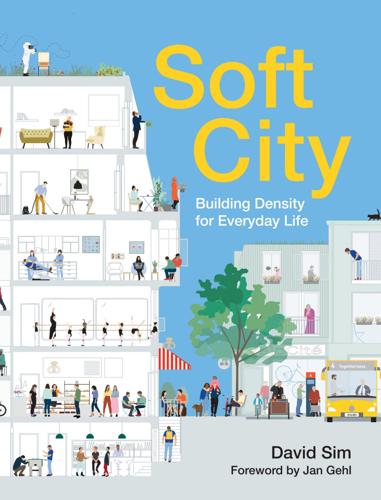
Soft City: Building Density for Everyday Life
by
David Sim
Published 19 Aug 2019
Blocks can be joined up to make streets; streets can be joined up to make neighborhoods; neighborhoods can be joined up to make whole towns and cities. The missing middle? Medium-rise blocks can deliver both high density and human scale at the same time, better connecting people to the ground and to each other. Together, you get a system of independent fractals with limitless permutations. Each individual building has the potential to adapt and change, in its own way and responding to the unique and specific circumstances of its users. The totality can make a resilient system, accommodating difference and tolerant to change over time. This pattern of building might help us find the so-called missing middle in urban development in a time of rapid urbanization, when politics and market forces often demand densification.

Who Stole the American Dream?
by
Hedrick Smith
Published 10 Sep 2012
THE GREAT WEALTH SHIFT: HOW THE BANKS ERODED MIDDLE-CLASS SAVINGS CHAPTER 15. OFFSHORING THE DREAM: THE WAL-MART TRAIL TO CHINA CHAPTER 16. HOLLOWING OUT HIGH-END JOBS: IBM: SHIFTING THE KNOWLEDGE ECONOMY TO INDIA CHAPTER 17. THE SKILLS GAP MYTH: IMPORTING IT WORKERS COSTS MASSES OF U.S. JOBS PART 5: OBSTACLES TO A FIX CHAPTER 18. THE MISSING MIDDLE: HOW GRIDLOCK ADDS TO THE WEALTH GAP CHAPTER 19. THE RISE OF THE RADICAL RIGHT, 1964–2010: ASSAULT ON THE MIDDLE-CLASS SAFETY NET CHAPTER 20. THE HIGH COST OF IMPERIAL OVERSTRETCH: HOW THE U.S. GLOBAL FOOTPRINT HURTS THE MIDDLE CLASS PART 6: CHALLENGE AND RESPONSE CHAPTER 21. RECLAIMING THE DREAM: A DOMESTIC MARSHALL PLAN: A TEN-STEP STRATEGY CHAPTER 22.
…
By 2010, he was a moderate, centrist Democrat with a shot at the presidency if he stayed in the political game. But Evan Bayh was so sickened by the partisan gridlock and inertia on Capitol Hill that he announced he was quitting the Senate—giving up his political career in Washington. CHAPTER 18 THE MISSING MIDDLE HOW GRIDLOCK ADDS TO THE WEALTH GAP Over the past thirty years, the parties have deserted the center … in favor of the wings…. First, at the level of individual members of Congress, moderates are vanishing. Second, the two parties have pulled apart. —NOLAN MCCARTY, KEITH T. POOLE, AND HOWARD ROSENTHAL, Polarized America It’s the incredible shrinking middle.
…
“Nobody goes there anymore,” said Baucus. “When I was here 10, 15, 30 years ago, that was the place you would go to talk to senators, let your hair down, just kind of compare notes, no spouses allowed, no staff, nobody. It is now empty.” Polarized Politics Plus Filibusters Equals Senate Gridlock Polarized parties and the missing middle spell policy stalemates. Gridlock has risen almost exponentially since the early 1990s, according to Professor Sarah Binder of George Washington University. “Partisan polarization and ideological diversity both contribute to policy stalemate,” she found. When voters split control of Congress and the White House between the two parties, it’s worse: The odds of gridlock escalate.
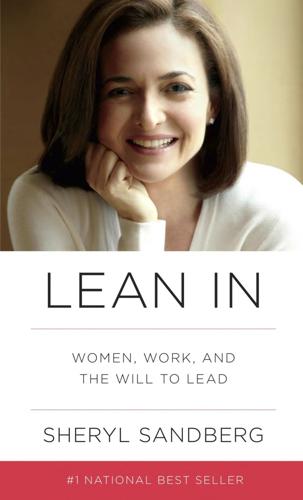
Lean In: Women, Work, and the Will to Lead
by
Sheryl Sandberg
Published 11 Mar 2013
See Eileen Applebaum and Ruth Milkman, Leaves That Pay: Employer and Worker Experiences with Paid Family Leave in California, Center for Economic and Policy Research (January 2011), 18. 20. Joan C. Williams and Heather Boushey, The Three Faces of Work-Family Conflict: The Poor, The Professionals, and the Missing Middle, Center for American Progress and Center for WorkLife Law (January 2010), 54–55, http://www.americanprogress.org/issues/2010/01/three_faces_report.html. 21. Laurie A. Rudman and Kris Mescher, “Penalizing Men Who Request a Family Leave: Is Flexibility Stigma a Femininity Stigma?,” Journal of Social Issues, forthcoming. 22.
…
See Leslie Perlow, Sleeping with Your Smartphone: How to Break the 24/7 Habit and Change the Way You Work (Boston: Harvard Business Review Press, 2012). 14. Colin Powell with Tony Koltz, It Worked For Me: In Life and Leadership (New York: HarperCollins, 2012), 40. 15. Joan C. Williams and Heather Boushey, The Three Faces of Work-Family Conflict: The Poor, The Professionals, and the Missing Middle, Center for American Progress and Center for WorkLife Law (January 2010), 7. http://www.americanprogress.org/issues/2010/01/three_faces_report.html. 16. Economic Policy Institute, “Chart: Annual Hours of Work, Married Men and Women, 25–54, with Children, 1979–2010, by Income Fifth,” The State of Working America, http://stateofworkingamerica.org/chart/swa-income-table-2–17-annual-hours-work-married/.

The People's Platform: Taking Back Power and Culture in the Digital Age
by
Astra Taylor
Published 4 Mar 2014
The head and tail are not coming closer together but spreading apart, macro- and micro-dilating, as the stuff in between disappears. The rise of e-books, experts point out, has coincided with the polarization of the publishing industry, with midsize companies closing shop or being swallowed up by conglomerates, the gulf between small and large companies widening. It’s a phenomenon Matthew Hindman called the “missing middle” after observing that online traffic to news Web sites is even more concentrated than print circulation at both extremes, the very top and the very bottom. Anita Elberse, a Harvard Business School professor, came to a similar conclusion based on her study of data from music streaming and movie rental services: “Although no one disputes the lengthening of the tail (clearly more obscure products are being made available for purchase every day), the tail is likely to be extremely flat and populated by titles that are mostly a diversion for consumers whose appetite for true blockbusters continues to grow.”28 Closer examination by Elberse and others shows that the leveling power of the long tail has been overstated.
…
While it sounds empowering, the presence of a small number of superstars is actually detrimental to democracy, not emblematic of it. Instead of facilitating the fame and fabulous wealth of a lucky few, democratizing culture involves mitigating against the winner-take-all effects of digital networks and finding ways to bolster the missing middle. A more democratic culture means supporting creative work not because it is viral but because it is important, focusing on serving needs as well as desires, and making sure marginalized people are given not just a chance to speak but to be heard. A more democratic culture is one where previously excluded populations are given the material means to fully engage.

The Survival of the City: Human Flourishing in an Age of Isolation
by
Edward Glaeser
and
David Cutler
Published 14 Sep 2021
Taco, April 24, 2018. www.lataco.com/artwashing-fight-takes-twist-with-gallerys-offer-to-ceremonially-close-in-boyle-heights. “Village of Euclid v. Ambler Realty Company.” Oyez. www.oyez.org/cases/1900-1940/272us365. Villianatos, Mark, and Madeline Brozen. “Encouraging Diverse Missing-Middle Housing Near Transit.” UCLA Lewis Center for Regional Policy Studies Policy Briefs, May 1, 2019. www.lewis.ucla.edu/research/encouraging-diverse-missing-middle-housing-near-transit. “Violence Erupts in Boston over Desegregation Busing.” History.com, September 12, 1974. www.history.com/this-day-in-history/violence-in-boston-over-racial-busing. Voigtländer, Nico, and Hans-Joachim Voth.
…
These covenants held sway: Silva, “Racial Restrictive Covenants History: Enforcing Neighborhood Segregation in Seattle.” The appeal of restrictive: Robson, “Public Interest Lawyering & Judicial Politics: Four Cases Worth a Second Look in Williams-Yulee v. The Florida Bar.” After 1921: Villianatos and Brozen, “Encouraging Diverse Missing-Middle Housing Near Transit.” Even today, areas: Resseger, “The Impact of Land Use Regulation on Racial Segregation: Evidence from Massachusetts Zoning Borders.” ineligible for federally supported: Reft, “Segregation in the City of Angels: A 1939 Map of Housing Inequality in L.A.” “class and occupation”: Home Owners’ Loan Corporation, “Security Map of Los Angeles County/Area Desription.”
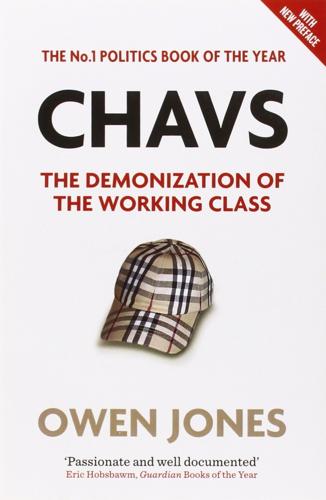
Chavs: The Demonization of the Working Class
by
Owen Jones
Published 14 Jul 2011
We used to be on bonuses and all sorts for cutting coal, and you used to earn really good money. Now you're lucky if you bring in£200 a week. And with the cost of living nowadays, it's not a lot of money.' As Eilis Lawlor of the New Economics Foundation expressed it to me, the disappearance of skilled jobs is creating a 'missing middle'. 'We've seen a polarization of the labour market, as relatively well-paid manufacturing jobs are replaced by less well-paid jobs in the service sector,' she says. Others call it the 'hourglass' economy: highly paid jobs at one end, and swelling numbers oflow-paid, unskilled jobs at the other.
…
It would also provide a possible alternative for many low-paid service sector workers. 'The thing we talk about is trying to have an industrial policy,' says Eilis Lawlor from the New Economics Foundation. 'That means actually deciding that you're going to support and promote industries that would fill the "missing middle" of skilled jobs, and you would tilt them spatially towards poor areas and areas that have been affected by recessions, but also policies to target particular industries.' The fag end of the last Labour government began toying with an industrial policy-but after thirteen years of collapsing manufacturing, it was nowhere near bold enough.

Stuck: How the Privileged and the Propertied Broke the Engine of American Opportunity
by
Yoni Appelbaum
Published 17 Feb 2025
The urban planner M. Nolan Gray wants to abolish zoning, relying instead on comprehensive planning and nuisance regulation. The journalist Henry Grabar is concerned by the spread of parking and suggests reclaiming our cities for people instead of cars. The architect Daniel Parolek points to the missing middle, advocating construction of more duplexes and fourplexes and townhomes. Daniel Aldana Cohen and Mark Paul want to build social housing, mixed-income, publicly owned developments where market-rate renters subsidize the poorer households who live alongside them. The Brookings Institution’s Jenny Schuetz, recognizing the complexity of the problem, has a seven-part plan; UCLA’s Shane Phillips breaks it down even further, offering fifty policy recommendations.
…
GO TO NOTE REFERENCE IN TEXT The crisis of housing affordability: M. Nolan Gray, Arbitrary Lines: How Zoning Broke the American City and How to Fix It (Washington, D.C.: Island Press, 2022); Henry Grabar, Paved Paradise: How Parking Explains the World (New York: Penguin Press, 2023); Daniel G. Parolek, Missing Middle Housing: Thinking Big and Building Small to Respond to Today’s Housing Crisis (Washington, D.C.: Island Press, 2020); Daniel Aldana Cohen and Mark Paul, “The Case for Social Housing,” Data for Progress & the Justice Collaborative Institute, Nov. 2020; Jenny Schuetz, Fixer-Upper: How to Repair America’s Broken Housing Systems (Washington, D.C.: Brookings Institution Press, 2022); Shane Phillips, The Affordable City: Strategies for Putting Housing Within Reach (Washington, D.C.: Island Press, 2020).
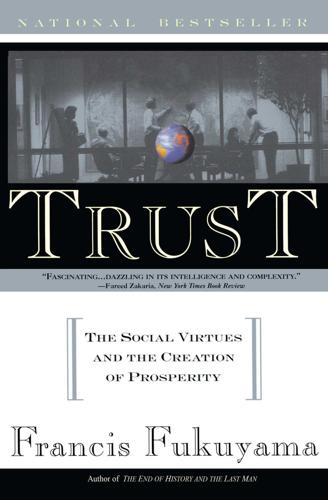
Trust: The Social Virtue and the Creation of Prosperity
by
Francis Fukuyama
Published 1 Jan 1995
Russian civil society before the Bolshevik Revolution, weakened by centuries of absolutist rule, was not strong. What existed, such as the small private sector and social structures like the peasant commune, or mir, were ruthlessly eradicated. By the time of Stalin’s consolidation of power in the late 1930s, the Soviet Union exhibited a “missing middle”: the complete dearth of strong, cohesive, or durable intermediate associations. That is, the Soviet state was very powerful, and there were many atomized individuals and families, but in between there were virtually no social groups whatsoever. The ironic consequence of a doctrine designed to eliminate human selfishness was that people were made more selfish.
…
Banfield found that social ties and moral obligation were limited to the nuclear family alone; outside of this, individuals did not trust each other and therefore did not feel a sense of responsibility to larger groups, whether they were the neighborhood, village, church, or nation.17 These findings have been largely confirmed, at least for southern Italy, in Robert Putnam’s study of civic traditions in that country. And in Spain, according to Lawrence Harrison, excessive individualism, “a narrow radius of trust and the centrality of the family to the exclusion of broader society,” has long been characteristic.18 The “missing middle” between the family and the state is not unique to these Latin Catholic cultures. In fact, it finds a purer expression in Chinese societies—in Taiwan, Hong Kong, Singapore, and the People’s Republic of China itself.19 As we will see in the following chapters, the essence of Chinese Confucianism is familism.
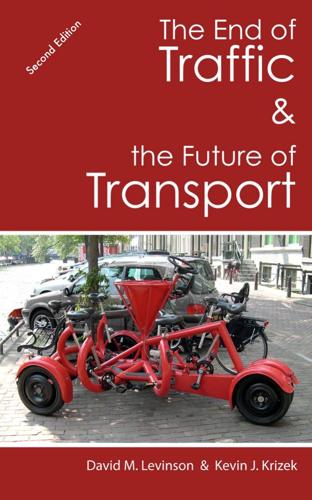
The End of Traffic and the Future of Transport: Second Edition
by
David Levinson
and
Kevin Krizek
Published 17 Aug 2015
Comment: The graph shows both linked and unlinked transit trips, as the way transit trips are counted has changed, and there is no continuous series of both over the entire period, we estimated linked transit trips to improve clarity of presentation, but these are unofficial estimates. Source US Census Statistical Abstract http://www.census.gov/prod/2/gen/96statab/app4.pdf and US Federal Highway Administration: Highway Statistics http://www.fhwa.dot.gov/policyinformation/statistics/2012/vmt422c.cfm 223 See: http://www.strongtowns.org/journal/2015/3/2/transportations-missing-middle 224 See taxonomy of modes at: http://transportationist.org/category/transportation/ 225 Car seats that fit your children is another factor of personal space that favors ownership. 226 List of metros, see: http://en.wikipedia.org/wiki/List_of_metro_systems 227 Like anything, different surveys with different assumptions produce different transit mode shares.
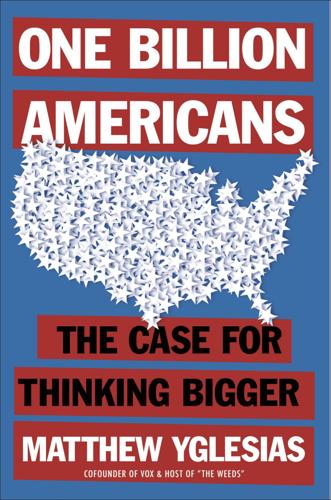
One Billion Americans: The Case for Thinking Bigger
by
Matthew Yglesias
Published 14 Sep 2020
A lot of “urbanist” discourse in the United States is dominated by people who have a strong aesthetic preference for the look of neighborhoods that were built before the era of widespread car ownership. This leads then to want to replace the mandatory suburbanism that currently dominates American land use with a kind of retro-urbanism that would relegalize town houses and garden apartments without necessarily leaping all the way to towers. These “missing middle” building types should be legal. But advocates also shouldn’t kid themselves. Changing zoning won’t un-invent cars or re-create the economic conditions that made little brick buildings a profitable form of construction. Given the existing technology, it genuinely makes sense for the majority of developed land to be given over to the kind of suburbs that Americans know and love (or in some cases love to hate).
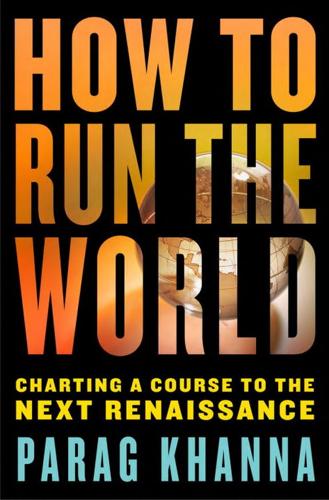
How to Run the World: Charting a Course to the Next Renaissance
by
Parag Khanna
Published 11 Jan 2011
The Obama administration has moved beyond conflating the global struggle against al-Qaeda with the larger challenge of rehabilitating the economy and governance of postcolonial Muslim societies, but has yet to penetrate deep enough to help them see a better future. The Arab world has the greatest share of its population in Generation Y, but this cohort is also a generation in waiting: waiting for jobs, education, marriage, and homes. All the reports about a “missing middle class” and “youth bulge” should focus on how to build more vocational centers, factories, and call centers in the Middle East. This is the time for American companies—not its military—to be the tip of the spear. Foreign investment reinforces alliances: Now that the U.S. military has pulled out of Saudi Arabia, it’s increasingly up to multinationals such as Alcoa, which recently announced a $10 billion investment in a new aluminum complex, to bring jobs in modern facilities and goodwill to the Saudi people.
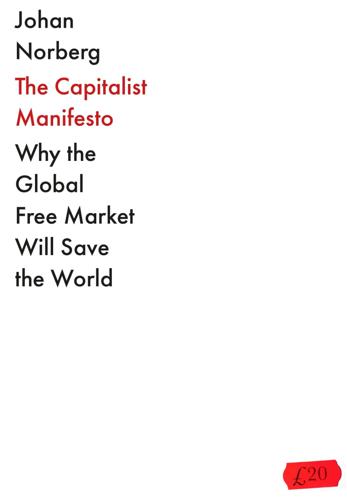
The Capitalist Manifesto
by
Johan Norberg
Published 14 Jun 2023
The numbers did show that the middle class has eroded, which everyone is worried about (between 1967 and 2018, the proportion with that average salary decreased from 54 to 42 per cent), but they don’t ask the relevant question: where did the middle class go? Not down, because the proportion earning less than $35,000 a month has also decreased, from 36 to 28 per cent. The missing middle class has moved upwards. The proportion who earn more than $100,000 a month has more than tripled since 1967, from 10 to 30 per cent. It is not the bottom that has slipped, but the ceiling that has been raised.18 Share of households per income group19 I know, it’s easy to get the feeling that ‘when my grandfather was my age, he could support his wife and three children and have a house built without borrowing a penny, while I have to take out a payday loan to afford a PlayStation’, but it ignores the fact that your grandfather only had to pay a tenth of his income to the government, and that in his time it was actually legal to build a new house somewhere (and as late as 1950, the chance was more than even that his home would lack a bathroom).20 In addition, the generally low wages made labour-intensive projects such as building a house cheap.
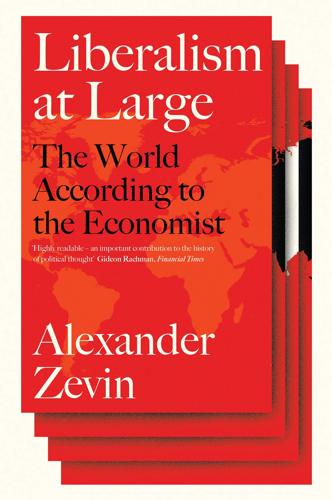
Liberalism at Large: The World According to the Economist
by
Alex Zevin
Published 12 Nov 2019
That explains why the pound rose this week’: ‘Game Change’, ‘Theresa May: Tory of Tories’, ‘Hard Work for Labour’, 22 April 2017. 10.Raising the minimum wage would mean ‘60% of young workers’ salaries are set by the state’. Free tuition was ‘a vast subsidy for the middle class and a blow to the poor, more of whom have enrolled since tuition fees helped create more places’: ‘Britain’s Missing Middle’, ‘Cor!’, 3 June 2017. 11.‘Britain’s Missing Middle’, 3 June 2017; ‘Europe’s Saviour’, 17 June 2017. Sophie Pedder, the paper’s Paris chief, was a perfervid Macron-booster; for her sense of why France needed him, see her Le déni français: les derniers enfants gatés de l’Europe, Paris 2012, and ‘France in Denial’, 31 May 2012. 12.

The New Urban Crisis: How Our Cities Are Increasing Inequality, Deepening Segregation, and Failing the Middle Class?and What We Can Do About It
by
Richard Florida
Published 9 May 2016
More than 840 million people—roughly one in ten worldwide—are trapped in the impoverished slums of these fast-urbanizing places.3 The scale of the problem is mind-boggling: The number of people who live in destitute conditions in the world’s slums is equivalent to the entire population of the United States and the European Union combined. The “missing middle” that exists between the advantaged cities of the United States, Europe, and Japan and the least advantaged of the Global South makes the divides we face here at home pale by comparison. This is the global dimension of the New Urban Crisis. Those of us who have the good fortune to live in and around the cities of the world’s advanced economies take the benefits of urbanization for granted; they are things that were achieved and consolidated a long time ago.
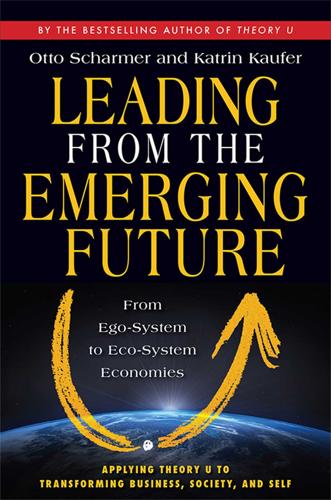
Leading From the Emerging Future: From Ego-System to Eco-System Economies
by
Otto Scharmer
and
Katrin Kaufer
Published 14 Apr 2013
Triodos and GLS Bank guarantee their customers that their deposits will be invested in ecological and social enterprises. One hundred percent of their loans are made public, for example on an interactive Google map, to create transparency. BRAC Bank, the third-largest bank in Bangladesh, was founded in 2001 with the purpose of serving the “missing middle,” medium-sized enterprises that create desperately needed employment opportunities. These banks develop financial products that address key challenges of their society: financial tools for regenerative energy; loans for entrepreneurs who still operate primarily with cash; and phone banking systems that allow families in remote rural areas to efficiently receive cash transfers from relatives abroad.
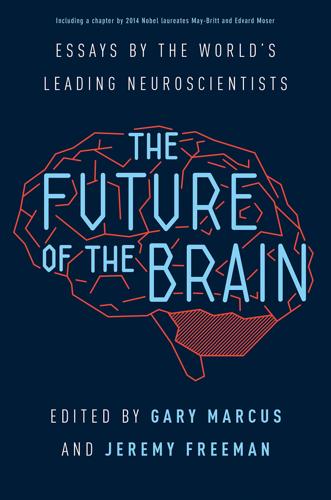
The Future of the Brain: Essays by the World's Leading Neuroscientists
by
Gary Marcus
and
Jeremy Freeman
Published 1 Nov 2014
By contrast, optogenetic methods provide unprecedented selectivity to turn cells on or off so that the role of selected networks in behavior can be directly tested. Optogenetics promises greater selectivity for manipulating each element of a circuit, but will surely have its own pitfalls. Thus, electrical and optically based neurotechnology are poised to provide the missing middle level of data and key information that links neurons to behavior. Neurotechnology as a Clinical Tool Advances in neurotechnology sparked by basic research will also generate an entirely new set of diagnostic, therapeutic, and restorative devices for human clinical applications. Importantly, the knowledge gained from using these same tools for basic inquiry will further enhance clinical use.

The Revenge of Analog: Real Things and Why They Matter
by
David Sax
Published 8 Nov 2016
The Guardian, December 16, 2014. Courtice, Craig. “The Cult of the Moleskine.” National Post, November 11, 2006. Francese, Alberto. “Moleskine: Brand and Model to Catch Target Market Growth.” Banca IMI, March 24, 2015. “Hacking a GTD Moleskine.” Lifehack, January 2007. Harkin, James. Niche: The Missing Middle and Why Business Needs to Specialize to Survive. Abacus, 2012. Horowitz, Jason. “Does a Moleskine Notebook Tell the Truth?” New York Times, October 16, 2004. Jabr, Ferris. “The Reading Brain in the Digital Age: Why Paper Still Beats Screens.” Scientific American, November 1, 2013. Levitin, Daniel.

Confessions of a Microfinance Heretic
by
Hugh Sinclair
Published 4 Oct 2012
When a micro-entrepreneur actually benefits from loans from an MFI, there arises a point when the MFI is no longer able to offer them more credit. Maximum loan sizes may be $1,000 or $10,000, depending on the region and the MFI. But at this point the entrepreneur has few options. They are still unable to obtain a loan in a commercial bank. There is a gap: the so-called “missing middle.” Funding such minicompanies has a host of benefits that the typical microbusiness lacks: they are often more formal, and they may even pay tax to the local government. They have a higher chance of actually creating new jobs (and not simply employing their own kids at the expense of their getting an education).

The Sirens of Mars: Searching for Life on Another World
by
Sarah Stewart Johnson
Published 6 Jul 2020
.: Scientific and Technical Information Division, Office of Technology Utilization, NASA, 1968), p. 126. STRUGGLED TO CORRELATE One planetary scientist remarked that the Mariner 4 images were like staring through binoculars at the wrinkled skin of an elephant. Mariner 6 and 7 were designed to cover this “missing middle,” helping to bridge the gap and allow for a reliable interpretation of the close-up images of the Martian surface. Stewart A. Collins, The Mariner 6 and 7 Pictures of Mars (Pasadena, Calif.: NASA JPL, 1971), pp. 24–25. NASA PRESS TEAM “Press Kit, Mariner Mars ’69,” NASA (Feb. 14, 1969). BEGAN A ROUTINE TEST PROCEDURE Kay Grinter, “One small step on the Moon, one giant footprint on Mars,” Spaceport News (March 26, 2004); DNews, “The Brave Story of Mars’ McClure-Beverlin Escarpment,” Seeker (March 3, 2014); James H.
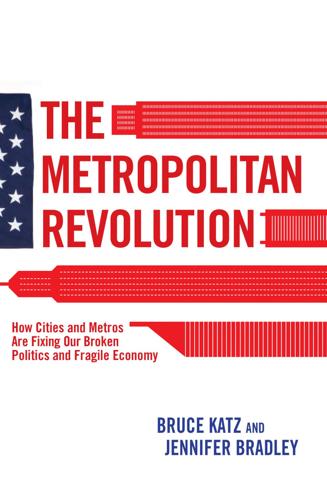
The Metropolitan Revolution: How Cities and Metros Are Fixing Our Broken Politics and Fragile Economy
by
Bruce Katz
and
Jennifer Bradley
Published 10 Jun 2013
The absence of an exporting system in U.S. metros is replicated in the private sphere. Analysts have observed that American financial institutions, addicted to cookie-cutter loans in housing markets and credit card debt in consumer markets, have been slow to adapt products to the export sector. There is a “missing middle” in international trade that is not touched by government credit programs or private sector innovations in finance.28 The final challenge to internationalizing metropolitan economies lies outside the control of metropolitan leaders. The hard fact is that the federal government’s approach to trade is anachronistic and fundamentally unrelated to the central driving role of metropolitan areas.

Broke: How to Survive the Middle Class Crisis
by
David Boyle
Published 15 Jan 2014
The practical hope for them seems to me to lie somewhere along these lines — to remember that they are not hidalgos, and to put aside centuries of nervousness and snobbery about ‘trade’, and to claw back the economy from the speculators and monopolies. This means taking a leaf out of William Cobbett’s book. It means that hard work lies ahead. In fact, given that their place in the missing middle layers of the corporations has now gone for ever, the middle classes have to become entrepreneurs again. Bridport in Dorset is an unlikely place to choose as the capital of a resurgent entrepreneurial culture. It still has an old-fashioned manufacturing base, specializing in making ropes and nets, as the town has done for centuries.
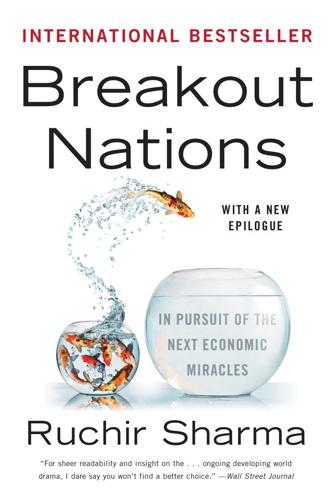
Breakout Nations: In Pursuit of the Next Economic Miracles
by
Ruchir Sharma
Published 8 Apr 2012
Putin’s disapproval rating has doubled since 2008 to 40 percent as of late 2011, and the decline has accelerated following his announcement that he plans to stand for president again in 2012. Had he decided to ride away into the sunset in 2008, following his second presidential term, he could have gone down as one of the most successful Russian leaders in postwar history, but now that legacy is at serious risk. The Missing Middle There is no middle ground in Russia. The proportion of small and medium-sized enterprises is lower in Russia than in any other major emerging market. Small, dynamic, and entrepreneurial firms like these were crucial to the emergence of Japan, Taiwan, and South Korea, but they hardly exist in Russia.
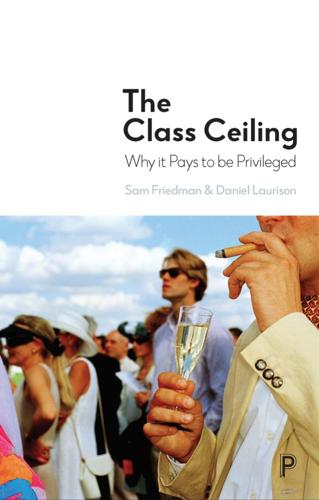
The Class Ceiling: Why It Pays to Be Privileged
by
Sam Friedman
and
Daniel Laurison
Published 28 Jan 2019
The ‘Position and salary’ column gives somewhat different information for each case study: for TC, 6TV and Coopers we give the firms’ categorisation of each interviewee’s position; for TC and 6TV we give the salary range associated with that job description, while for Coopers we have self-reported income in ranges, and for actors we simply asked them about how much they earned in a year and report that here. 247 Woman Woman Woman Man Man Claire Cora Daniel Dave Woman Alice Catherine Woman Alex Woman Woman Aisha Bridget Woman Aila Man Woman Aika Bill Gender Name 248 White British White British White British White British White British White British White British White British White Other Black British White British Mixed/ multiple Ethnicity 50s 20s 40s 50s 30s 60s 50s 40s 20s 20s 40s 30s Age Table A.1a: 6TV interviewees FE teacher Teacher Senior civil servant IT technician Senior manager Steelworker Factory machine operator Hospital porter Factory worker Teacher Actor Taxi driver Father’s occupation Office manager Teacher Housewife Admin assistant Secretary Housewife Housewife Cleaner Secretary Police officer Nurse Shop assistant Mother’s occupation Medium Medium High Medium Medium Low Low Low Low Medium Medium Low Inherited economic capital High High High Low Medium Low Low Low Low Medium Medium Low Inherited cultural capital Grammar State Private State State Grammar State State State State State State Schooling Senior manager, £60k–120k Senior manager, £60k–120k Senior manager, £60k–120k HoD/exec, £100k–500k Senior manager, £60k–120k HoD/exec, £100k–500k HoD/exec, £100k–500k Assistant/admin, £21k–60k Prof/tech, £25k–70k Prof/tech, £25k–70k HoD/exec, £100k–500k Prof/tech, £25k–70k Position and salary range Commissioning Commissioning Legal and Commercial Technical and Strategy Technical and Strategy HR, Finance, Estates Commissioning Commissioning Legal and Commercial Marketing and Communications HR, Finance, Estates Legal and Commercial Department London London London London London London London London Glasgow London London London Interview location Steady Accelerated Steady Steady Steady Steady Steady Impeded Impeded Steady Accelerated Steady Career trajectory The Class Ceiling Woman Woman Man Woman Kate Katie Keir Kerry Woman Holly Man Woman Hannah Josh Man George Man Woman Gemma Javid Woman Esme Man Man Dean James Gender Name 249 White Other White British White British White British White British Indian British White Other Chinese British Black British White British White British White Other White Other Ethnicity 60s 50s 50s 20s 40s 20s 60s 20s 50s 30s 30s 30s 30s Age Senior civil servant Scientist Dentist N/A Headteacher Factory worker Medium-size business owner Cook Plasterer Barman Labourer Builder Shopkeeper Father’s occupation Housewife Housewife Housewife Cleaner Care worker Factory worker Housewife Waitress Hairdresser Admin assistant Cleaner Dressmaker Shop assistant Mother’s occupation High High High Low Medium Low High Low Medium Low Low Medium Medium Inherited economic capital High Medium Medium Medium High Low High Medium Low Low Low Low Low Inherited cultural capital Private State Private Grammar Private State Private State State Private State State State Schooling HoD/exec, £100k–500k Senior manager, £60k–120k Manager, £35k–80k Senior manager, £60k–120k HoD/exec, £100k–500k Senior manager, £60k–120k HoD/exec, £100k–500k Assistant/admin, £21k–60k Manager, £35k–80k Prof/tech, £25k–70k Prof/tech, £25k–70k Prof/tech, £25k–70k Senior manager, £60k–120k Position and salary range Commissioning Technical and Strategy Technical and Strategy Marketing and Communications Commissioning Sales, Digital, Trading Commissioning Commissioning HR, Finance, Estates Commissioning HR, Finance, Estates Technical and Strategy Sales, Digital, Trading Department London London London London London London London London London London London London London Interview location Steady Steady Steady Steady Accelerated Impeded Accelerated Impeded Impeded Steady Steady Steady Steady Career trajectory Methodological appendix Woman Woman Man Man Woman Mary Michael Mo Monica Woman Lizzie Martha Man Leon Man Woman Kylie Mark Man Kieran Woman Man Kevin Maisie Gender Name 250 White British Mixed/ multiple White British Black British White British White British White British White British White British White British White British White Other Ethnicity 30s 20s 40s 20s 40s 30s 30s 40s 20s 40s 20s 50s Age Teacher Taxi driver University lecturer N/A Headteacher Scientist N/A Professor Soldier Factory worker Labourer Large business owner Father’s occupation Table A.1a: 6TV interviewees (continued) Office manager Shop assistant Pharmacist Catering assistant Social worker Teacher Home help Housewife Shop assistant Primary school teacher N/A Senior business manager Mother’s occupation Medium Medium High Low Medium High Low High Low Medium Low High Inherited economic capital Medium Low High Low High High Low High Low Medium Low High Inherited cultural capital State Private State State Private Private State Private State Private State Private Schooling Senior manager, £60k–120k Prof/tech, £25k–70k Senior manager, £60k–120k Prof/tech, £25k–70k HoD/exec, £100k–500k Senior manager, £60k–120k Manager, £35k–80k HoD/exec, £100k–500k Manager, £35k–80k Senior manager, £60k–120k Assistant/admin, £21k–60k Senior manager, £60k–120k Position and salary range Commissioning HR, Finance, Estates Commissioning HR, Finance, Estates Commissioning Commissioning HR, Finance, Estates Commissioning Sales, Digital, Trading Sales, Digital, Trading Commissioning Commissioning Department London London London London London London London London Glasgow London London London Interview location Steady Steady Steady Impeded Steady Accelerated Steady Accelerated Steady Steady Impeded Accelerated Career trajectory The Class Ceiling Woman Woman Man Sophie Suzy Theo Woman Rachel Man Man Peter Sam Woman Patricia Woman Man Nish Ruth Man Nigel Man Woman Natalia Roger Gender Name 251 White British Black British White British White British White British White Other White British White British White British Asian British White British Black British Ethnicity 30s 40s 30s 30s 50s 50s 40s 30s 40s 50s 40s 20s Age Farmer Unemployed Senior manager Plumber Large business owner Senior manager Professor Teacher Managing director Architect Management consultant N/A Father’s occupation Secretary Waitress Translator Missing data Teacher Housewife Editor Radiographer Teacher Nurse Secretary Porter Mother’s occupation Medium Low High Low High Medium High Medium Medium High High Low Inherited economic capital Low Low High Low Medium High High Medium Medium High High Low Inherited cultural capital State State Private State Private Private State State Private State Private State Schooling Manager, £35k–80k Manager, £35k–80k Senior manager, £60k–120k Prof/tech, £25k–70k Manager, £35k–80k HoD/exec, £100k–500k Senior manager, £60k–120k Senior manager, £60k–120k HoD/exec, £100k–500k HoD/exec, £100k–500k HoD/exec, £100k–500k Assistant/admin, £21k–60k Position and salary range Technical and Strategy HR, Finance, Estates Commissioning HR, Finance, Estates Marketing and Communications Legal and Commercial Commissioning Marketing and Communications Technical and Strategy Legal and Commercial Marketing and Communications Commissioning Department Glasgow London London Glasgow London London London London London London London London Interview location Steady Impeded Accelerated Steady Steady Accelerated Accelerated Accelerated Steady Accelerated Accelerated Impeded Career trajectory Methodological appendix Man Man Man Man Woman Man Colin Eugene Fraser George Georgia Giles Woman Bev Man Woman Beth Woman Man Benedict Christopher Man Ben Charlotte Woman Barbara Woman Man Ally Cathy Gender Name 252 White British White British White British White Other White British White British White British White British White British White British White British White British White British White British White British Ethnicity 50s 20s 20s 20s 20s 40s 20s 20s 40s 30s 30s 20s 60s 20s 20s Age Doctor Missing Missing Missing Lawyer Tax inspector Missing Missing Legal executive Builder/estate agent Shop owner Missing Carpenter Missing Missing Father’s occupation Table A.1b: Turner Clarke interviewees Doctor Missing Missing Missing Marketing executive Middle manager Missing Missing Secretary Secretary Housewife Missing Shop assistant Missing Missing Mother’s occupation High Missing Missing Missing High Medium Missing Missing Medium Low Medium Missing Low Missing Missing Inherited economic capital High Missing Missing Missing High Medium Missing Missing Medium Low Low Missing Low Missing Missing Inherited cultural capital Private Private State State Private Private State State Grammar State State State State Private State Schooling Partner, £100k–500k Trainee, £25k–50k Trainee, £25k–50k Trainee, £25k–50k Trainee, £25k–50k Partner, £100k–500k Trainee, £25k–50k Trainee, £25k–50k Partner, £100k–500k Partner, £100k–500k Director, £75k–125k Trainee, £25k–50k Partner, £100k–500k Trainee, £25k–50k Trainee, £25k–50k Position and salary range Advisory Advisory Audit Audit Tax Audit Tax Tax Audit Advisory Advisory Audit Advisory Advisory Tax Department London London London London London St Albans London London London London London London London London Interview location Accelerated Steady Steady Steady Steady Accelerated Steady Steady Steady Impeded Impeded Steady Impeded Steady Steady Career trajectory The Class Ceiling Gender Man Woman Woman Man Woman Man Woman Woman Woman Man Man Woman Woman Woman Name Graham Hayley Imogen James Jane Jason Jennifer Jenny 253 Jess Joe Joshua Judy Karen Lola White British White British White British Black British White British White British Pakistani British Chinese British White Other White British White British White British Black British White British Ethnicity 50s 40s 40s 20s 40s 50s 20s 20s 40s 50s 40s 20s 20s 40s Age Toolmaker University professor Finance manager Hotel manager Environmental health officer Factory worker Taxi driver Missing Teacher Accountant Politician Missing Missing Actor Father’s occupation Seamstress Housewife Housewife HR manager Teacher Cleaner Housewife Missing Teacher Nurse Housewife Missing Missing Actor Mother’s occupation Medium High High Medium Medium Low Medium Missing Medium High High Missing Missing High Inherited economic capital Low High Medium Medium Medium Low Low Missing Medium High High Missing Missing High Inherited cultural capital State State Grammar Private Private State State State State Private State Private State Private Schooling Partner, £100k–500k Partner, £100k–500k Partner, £100k–500k Trainee, £25k–50k Partner, £100k–500k Partner, £100k–500k Trainee, £25k–50k Trainee, £25k–50k Partner, £100k–500k Partner, £100k–500k Partner, £100k–500k Trainee, £25k–50k Trainee, £25k–50k Partner, £100k–500k Position and salary range Audit Support Advisory Audit Tax Tax Tax Advisory Audit Advisory Advisory Advisory Tax Audit Department London Milton Keynes London London Milton Keynes Cardiff London London Manchester Manchester Cardiff London London London Interview location Impeded Steady Accelerated Steady Steady Impeded Impeded Steady Impeded Accelerated Accelerated Steady Steady Accelerated Career trajectory Methodological appendix Man Woman Man Man Man Man Woman Rebecca Robert Roger Terry Will Yasmine Man Nigel Raymond Man Neil Man Man Matthew Philip Man Martina Man Man Martin Paul Gender Name 254 White British White British White British White British White British White British White British White British White British White British White British White British White British White British Ethnicity 20s 20s 20s 50s 40s 20s 40s 40s 50s 30s 30s 40s 20s 40s Age Missing Doctor Missing Middle manager Senior manager IT manager Electrician Gardener Salesman Senior manager Senior manager Engineer Barman Large business owner Father’s occupation Missing Lawyer Missing Secretary Office manager Nurse Housewife Shop assistant Housewife Housewife Middle Manager Shop owner Cook Housewife Mother’s occupation Table A.1b: Turner Clarke interviewees (continued) Missing High Missing Medium High High Low Low Low High High Medium Low High Inherited economic capital Missing High Missing Medium Medium High Low Low Low High High Medium Low High Inherited cultural capital State Private State Grammar Grammar State State State Grammar Private State State State Private Schooling Trainee, £25k–50k Trainee, £25k–50k Trainee, £25k–50k Partner, £100k–500k Partner, £100k–500k Trainee, £25k–50k Partner, £100k–500k Partner, £100k–500k Partner, £100k–500k Partner, £100k–500k Partner, £100k–500k Partner, £100k–500k Trainee, £25k–50k Partner, £100k–500k Position and salary range Tax Advisory Audit Advisory Advisory Advisory Audit Advisory Advisory Advisory Audit Tax Advisory Audit Department London London London London London Leicester Cambridge Manchester Birmingham London Milton Keynes Manchester Milton Keynes Leicester Interview location Steady Accelerated Steady Steady Accelerated Accelerated Impeded Impeded Impeded Accelerated Accelerated Steady Impeded Accelerated Career trajectory The Class Ceiling Gender Woman Man Woman Man Man Man Woman Man Woman Woman Man Man Woman Man Man Woman Woman Name Abigail Aiden Alaina Andy Archie Brian Carrie Carter Charlotte Daisy 255 Dani Daniel Deborah Derek Douglas Ella Ellie White British White British White British White British Black British White British Asian (mixed) White British White British White British White British Black British White British White British White British White British White British Ethnicity 30s 40s 30s 50s 40s 20s 30s 30s 30s 50s 30s 40s 50s 20s 20s 20s 30s Age Table A.1c: Actors interviewees Headteacher Draughtsman Small business owner Labourer Office clerk Technician Teacher Teacher N/A Engineer Architect N/A Farmer Doctor Chef Unemployed N/A Father’s occupation Senior manager Hairdresser Housewife Secretary Shop assistant Admin assistant Teacher Teacher Civil servant Housewife Housewife Singer Housewife Doctor Admin assistant Care assistant Teacher Mother’s occupation High Medium Medium Low Low Low Medium Medium Medium Medium High Low Medium Medium Low Low Medium Inherited economic capital High Low Medium Low Low Low High High High Medium High Medium Low High Low Low High Inherited cultural capital State State Private State State State Private State Grammar Grammar Private State State State State State State Schooling £20k £12k £18k £27k £8k Negligible £36k Missing £30k £12k £18k £10k Negligible Missing £15k £60k £16.5k Salary Birmingham London London London Newcastle London London London London London London London London London London London London Interview location Steady Impeded Steady Impeded Impeded Impeded Accelerated Steady Steady Steady Steady Steady Impeded Steady Steady Steady/ impeded Steady Career trajectory Methodological appendix Woman Man Man Woman Man Woman Leon Lewis Lily Lloyd Lola Woman Jane Man Man Jack Leah Woman Isabelle John Woman Imogen Woman Woman Grace Man Man Fraser Joan Woman Faith Jim Gender Name 256 White British White British Chinese British White British White British Black British Chinese British White British White British White British White British White British Asian (mixed) White British White British Mixed/multiple Ethnicity 40s 40s 50s 40s 30s 20s 40s 30s 50s 40s 30s 20s 30s 30s 20s 40s Age N/A Mechanic Medium-size business owner Mechanical engineer Teacher Engineer Teacher Medium-sized business owner Van driver Office clerk Musician Kitchen fitter Actuary Builder Maintenance man Priest Father’s occupation Table A.1c: Actors interviewees (continued) Unemployed Care assistant Primary school teacher Cleaner Secretary Teacher Teacher Teacher Barman Office clerk Arts administrator Sales buyer Housewife Housewife Admin assistant Social worker Mother’s occupation Low Low Medium Medium Medium High Medium High Low Medium Medium Medium High Medium Medium Low Inherited economic capital Low Low Medium Low High Medium Medium Medium Low Low High Medium High Low Low Low Inherited cultural capital State State State State State Private State Grammar State State State Grammar Private State State State Schooling Missing £17k £34k £4k £25k Missing £20k Negligible £35k £100k–200k £40k £20k £24k–27k £27k Negligible £20k Salary Glasgow London London London London London London London London Glasgow Edinburgh London London Liverpool London London Interview location Impeded Steady Steady Steady Steady Steady Steady Impeded Impeded Accelerated Accelerated Steady Steady Steady Impeded Impeded Career trajectory The Class Ceiling Man Man Ted Tommy Man Olly Woman Man Nathan Sophie Woman Mollie Man Woman Millie Man Woman Mia Sandy Man Mason Ray Man Mark M Woman Lucy Peter Gender Name 257 White British White British White British White British White British White British White British White British White British White British White British White British White British White British Ethnicity 30s 50s 30s 20s 20s 20s 30s 40s 30s 50s 40s 40s Teens 20s Age Large business owner Cleric Labourer Senior manager N/A Cleric Actor Actor Large business owner Stockbroker Electrician Factory worker Company director Labourer Father’s occupation Housewife Primary school teacher Housewife Housewife Care worker Barrister Actor Actor Office manager Education manager Housewife Factory worker Marketing assistant Housewife Mother’s occupation High Medium Low High Low Medium High High High Medium Medium Low High Low Inherited economic capital High Medium Low High Low Medium High High High Medium Low Low Medium Medium Inherited cultural capital Private Grammar State Private State Grammar Private Private Private State State State State State Schooling £40k £20k Negligible £24k Negligible £14k £35k £50k £45k £12k–20k £30k Missing £12k–15k Negligible Salary London Skype Manchester London London London London London London Portsmouth London London London Liverpool Interview location Accelerated Steady Impeded Accelerated Impeded Steady Accelerated Accelerated Accelerated Steady Steady/ impeded Steady Steady Impeded Career trajectory Methodological appendix Man Man Man Man Man Connor Daffyd Dan David Woman Christine Colm Woman Anna Man Man Amir Clive Man Amin Woman Man Alan Claire Gender Name 258 White British White British White British White British White other White British White British White British White Other British Pakistani British Pakistani White British Ethnicity 40s 20s 20s 20s 20s 40s 30s 30s 20s 20s 30s 30s Age Potter Engineer Purchasing manager Sales representative Engineer Architect IT manager Retail manager Solicitor Unemployed Taxi driver Architect Father’s occupation Table A.1d: Coopers interviewees Primary school teacher Small business owner Retail manager Physiotherapist Nurse Shop manager Headteacher Engineer Nurse Housewife Housewife Osteopath Mother’s occupation Medium High Medium Medium Medium High High Medium Medium Low Low High Inherited economic capital Medium High Medium Medium Medium Medium Medium Medium Medium Medium Low High Inherited cultural capital State State State State State State State State State State State Private Schooling Partner, £60k+ Architectural Assistant, up to £24,999 Architectural Assistant, £25k–39,999 Architectural Assistant, £25k–39,999 Architectural Assistant, £25k–39,999 Partner, £60k+ Architect, £25k–39,999 Office Team, £40k–59,999 Architectural Assistant, £25k–39,999 Architectural Assistant, prefer not to say Partner, £60k+ Associate, £40k–59,999 Position and salary category London London London London London London London London London London London London Interview location Steady Steady Accelerated Steady Steady Steady Steady Steady Steady Steady Accelerated Accelerated Career trajectory The Class Ceiling Woman Man Man Kirsten Kristof Luke Man Gary Man Woman Gabriella John Woman Fran Woman Woman Finola Jessica Woman Elena Woman Man Eamon Helen Gender Name 259 White British White Other White Other White British White British Mixed Other White British White Other White Other White Other White Other White Other Ethnicity 20s 40s 20s 40s 20s 20s 50+ 20s 20s 20s 30s 30s Age Hotel manager Engineer Hotel manager Local authority manager Craftsman Doctor Mason Senior company manager Company director Business owner – construction Engineer Sales representative Father’s occupation HR manager Secretary Public relations manager Charity administration Local authority manager Social worker Canteen worker Housewife Receptionist Housewife Physiotherapist Primary school teacher Mother’s occupation Medium Medium High Medium High High Low High High Medium High Medium Inherited economic capital Medium Medium Medium Medium Medium Medium Medium High Medium Medium Medium Medium Inherited cultural capital State State Private State Private Private State Private State State State State Schooling Architect, £25k–39,999 Architect, £40k–59,999 Architectural Assistant, £25k–39,999 Associate, £60k+ Architectural Assistant, up to £24,999 Office Team, up to £24,999 Partner, £60k+ Architectural Assistant, £25k–39,999 Architect, £25k–39,999 Architectural Assistant, £25k–39,999 Architectural Assistant, £25k–39,999 Associate, £40k–59,999 Position and salary category London London London London London London London London London London London London Interview location Steady Impeded Steady Steady Steady Steady Steady Steady Impeded Steady Steady Steady Career trajectory Methodological appendix Woman Woman Man Man Woman Sarah Seamus Simon Sofia Man Paul Sara Man Paolo Woman Man Mike Pauline Man Miguel Woman Man Martin Paula Gender Name 260 White Other White British White Other White Other Black African White British White Other White British White Other White British White Other White British Ethnicity 30s 30s 20s 40s 20s 20s 30s 40s 20s 40s 40s 20s Age Business owner Architect Public-sector senior manager Engineer Dentist Entrepreneur Clerical Engineer Lawyer Architect Doctor Graphic designer Father’s occupation Table A.1d: Coopers interviewees (continued) Teacher Civil servant Physiotherapist Personal assistant Housewife Entrepreneur Clerical Researcher Nurse Canteen worker Housewife Local authority manager Mother’s occupation High High Medium High Medium Medium Medium Medium High Medium High Medium Inherited economic capital Medium High Medium Medium Medium Medium Medium Medium Medium Medium Medium Medium Inherited cultural capital State State State Private State State Private State State State State State Schooling Associate, £40k–59,999 Associate Partner, £40k–59,999 Architectural Assistant, £25k–39,999 Associate, £60k+ Architect, £25k–39,999 Architectural Assistant, £25k–39,999 Associate, £40k–59,999 Partner, £60k+ Architectural Assistant, £25k–39,999 Partner, £60k+ Associate, £40k–59,999 Architectural Assistant, £25k–39,999 Position and salary category London London London London London London London London London London London London Interview location Impeded Steady Steady Impeded Steady Steady Impeded Steady Steady Impeded Steady Accelerated Career trajectory The Class Ceiling Methodological appendix Check your privilege!
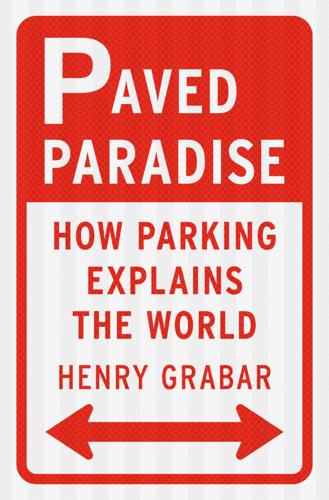
Paved Paradise: How Parking Explains the World
by
Henry Grabar
Published 8 May 2023
Go to note reference in text Malthusian thinking about: Alex Pareene, “The Indignity of Automobile Dependence,” AP Substack, May 10, 2022, theap.substack.com/p/the-indignity-of-automobile-dependence. Go to note reference in text In one 2022 survey: Manny Garcia, “Across 26 Metro Areas, Residents Largely Support Allowing Missing Middle Homes in Residential Neighborhoods,” Zillow, April 11, 2022, zillow.com/research/modest-densification-zhar-30934. Go to note reference in text as “frontier law”: Sarah Marusek, Politics of Parking: Rights, Identity, and Property (London: Routledge, 2016), 16. Go to note reference in text “notes on parking activity”: Jonathan M.

Frostbite: How Refrigeration Changed Our Food, Our Planet, and Ourselves
by
Nicola Twilley
Published 24 Jun 2024
Over the course of nearly two decades spent reporting on food for national and international newspapers and magazines, as well as for my own podcast, I’ve been lucky enough to visit all sorts of unusual, behind-the-scenes locations, from farms and factories to sourdough libraries, experimental orchards, and military labs. Still, until I began writing this book, I had never so much as peeked inside anything larger than a walk-in fridge. You probably have not either. The refrigerated warehouse is the missing middle in food’s journey from farm to table: a black box whose mysterious internal workings allow perishable food to conquer the constraints of both time and space. Even those chefs who are proud to know the life story of each steak they serve, or the foodies who insist on meeting the farmer who raised the meat they eat, would never dream of inquiring as to its storage history—or imagine that beef carcasses have to be electrocuted in order to withstand the rigors of refrigeration without toughening up.
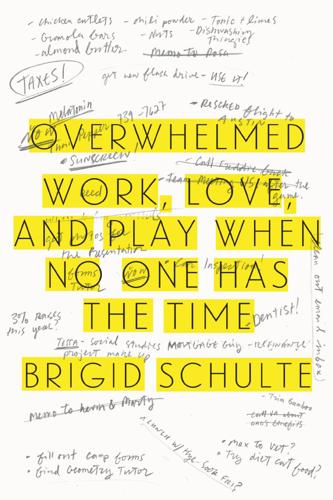
Overwhelmed: Work, Love, and Play When No One Has the Time
by
Brigid Schulte
Published 11 Mar 2014
Jacobs and Kathleen Gerson, The Time Divide: Work, Family, and Gender Inequality (Cambridge, MA: Harvard University Press, 2005), 164. See p. 34 for the table of hours. 24. Ibid., 35. 25. John C. Williams and Heather Boushey, “The Three Faces of Work-Family Conflict: The Poor, the Professionals, and the Missing Middle” (Washington, D.C.: Center for American Progress, January 2010), www.americanprogress.org/wp-content/uploads/issues/2010/01/pdf/threefaces.pdf. 26. Michael Hout and Caroline Hanley, “The Overworked American Family: Trends and Nontrends in Working Hours, 1968–2001” (working paper, Survey Research Center, University of California, Berkeley, 2002), http://ucdata.berkeley.edu/rsfcensus/papers/Working_Hours_HoutHanley.pdf.
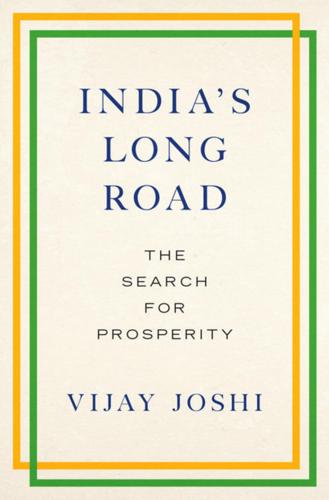
India's Long Road
by
Vijay Joshi
Published 21 Feb 2017
But 99.3 per cent of these were ‘micro’ enterprises (nine or fewer workers); and 99.8 per cent were ‘small’ (49 or fewer workers). The small firms (49 or fewer workers) employed 84 per cent of all workers in manufacturing; only 5.5 per cent were employed in medium-sized firms (50–199 workers), and only 10.5 per cent in large firms (200+ workers).16 This extraordinary size- distribution of firms with a ‘missing middle’ is very different from what is found in East Asia (see Table 5.3), where the distribution is much more evenly spread (or increases with firm-size as in China).17 The same story is repeated in services. In 2005, there were somewhat more than 100 million workers in services, employed in 16.5 million firms, of which 99.96 per cent were small (49 or fewer workers).
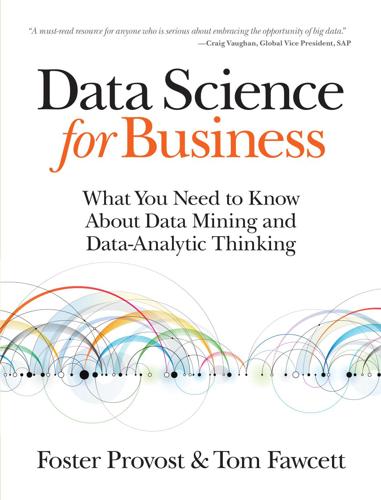
Data Science for Business: What You Need to Know About Data Mining and Data-Analytic Thinking
by
Foster Provost
and
Tom Fawcett
Published 30 Jun 2013
In the case of our two strings, the first could be transformed into the second with this sequence of operations: Delete a 1, Insert a c, and Replace an a with an e. So these two strings have an edit distance of three. We might compute a similar edit distance calculation for other fields, such as name (thereby dealing with missing middle initials, for example), and then calculate a higher-level similarity that combines the various edit-distance similarities. Note Edit distance is also used commonly in biology where it is applied to measure the genetic distance between strings of alleles. In general, edit distance is a common choice when data items consist of strings or sequences where order is very important

How Everything Became War and the Military Became Everything: Tales From the Pentagon
by
Rosa Brooks
Published 8 Aug 2016
For now, though, let’s stick with the world we inhabit today, in which we already find ourselves, more often than not, operating in the murky territory between what we traditionally conceptualize as “war” and what we traditionally conceptualize as “peace.” In the last few years, more and more thinkers have tried to find a way to label and describe this murky terrain. The Army’s Special Operations Command calls it “the missing middle,” while Nora Bensahel of the Center for a New American Security and retired Lieutenant General David Barno call it “a ‘gray zone’ between traditional notions of war and peace.” They write: Gray zone conflicts are not formal wars, and little resemble traditional, “conventional” conflicts between states. . . .

Good Economics for Hard Times: Better Answers to Our Biggest Problems
by
Abhijit V. Banerjee
and
Esther Duflo
Published 12 Nov 2019
Schumacher, Small Is Beautiful: A Study of Economics as If People Mattered (London: Blond & Briggs, 1973). 66 Nirmala Banerjee, “Is Small Beautiful?,” in Change and Choice in Indian Industry, eds. Amiya Bagchi and Nirmala Banerjee (Calcutta: K. P. Bagchi & Company, 1981). 67 Chang-Tai Hsieh and Benjamin A. Olken, “The Missing ‘Missing Middle,’” Journal of Economic Perspectives 28, no. 3 (2014): 89–108. 68 Adam Smith, The Wealth of Nations (W. Strahan and T. Cadell, 1776). 69 Dave Donaldson, “Railroads of the Raj: Estimating the Impact of Transportation Infrastructure,” American Economic Review 108, nos. 4–5 (2018): 899–934. 70 Dave Donaldson and Richard Hornbeck, “Railroads and American Growth: A ‘Market Access’ Approach,” Quarterly Journal of Economics 131, no. 2 (2016): 799–858. 71 Arnaud Costinot and Dave Donaldson, “Ricardo’s Theory of Comparative Advantage: Old Idea, New Evidence,” American Economic Review 102, no. 3 (2012): 453–58. 72 Asher and Novosad, “Rural Roads and Local Economic Development.” 73 David Atkin and Dave Donaldson, “Who’s Getting Globalized?

The Rise and Fall of Nations: Forces of Change in the Post-Crisis World
by
Ruchir Sharma
Published 5 Jun 2016
Until recently the anti-Mexico among the large emerging nations was the Philippines, where the influence of a twentieth-century plantation society has created a remarkable split in the population between the capital and the countryside. Currently 13 percent of Filipinos live in Manila, a proportion that has not changed since 1985 and is more than the share of people living in all other Philippine cities combined. This unique “missing middle” is quite astonishing even for a relatively undeveloped country—the Philippines’ average income is less than $3,000. However, signs of life have emerged in second cities like Cebu and Bacolod, which have seen their populations grow by 25 percent since 2000 and are starting to attract some of the call centers and IT service companies that have become an important pillar of the economy.